Have you ever liked an image on Instagram, reacted to a video on Facebook, or clicked a search result in Google, only to realize afterward that it was actually an ad?
Maybe you never realized it was an advertisement whatsoever — you just thought it was a cute post.
More than ever before, ads can be contextual, relevant, targeted, and useful in ways they never were before. In other words, ads today are content.
However, the online advertising landscape is always changing.
New platforms, ad types, and targeting capabilities are appearing all the time.
Let’s look into everything you need to know about online advertising across ad platforms for social media, paid search, display, and native advertising.
93% of all online interaction starts with a search engine, and with those odds, you can catch the attention of the audience you want through online advertising.
There’s a lot of approaches to advertising your business strategically. Consider who you’re trying to reach when you start. Ask yourself, “what is my target audience?” And “how can I place my product or service offering in front of my target?”
The answer is to see where your target demographic spends the most time online. Research their most visited social media channels and most searched keywords and phrases. You can take this information and translate it into organic and paid marketing.
Not all online advertising has to cost money, individuals can discover your business organically through social media marketing. Making a business page on Facebook, Twitter, Instagram or even TikTok can capture people’s attention through engaging posts and content.
If you want to use pay-per-click (PPC) advertising, most social media offers business pages the ability to pay a fee to promote posts/ads within the platform. Or if you’re looking to advertise on a search engine for specific keywords and phrases, Google Ads or sixads can direct you through the process of payment and execution.
There are three critical ways that digital advertising can help you enhance the effectiveness of your organic marketing efforts.
With digital ads, organic marketing can benefit from:
– An increase in brand awareness by showing your content to people within as well as outside of your networks.
– A better understanding of your audiences by utilizing the targeting and analytics of the ads platforms.
– The creation of higher-performing content by being aware of what ad content helps you achieve your company goals and what doesn’t.
The goal of any ad strategy must be to get a positive return on your investment, which comes down to whether you’re getting more profit out of the ad campaign than the cost you’re putting in.
How can you determine what your ad spend should be to get the most return on your investment? To start answering that question, we’ll need to first understand the bidding system used by the ad networks.
A bid is the highest amount of money you’re willing to pay for the desired action on your ad. Ad networks have a limited amount of ad space, and to see whether or not your ads are displayed, they run an auction to determine how much each advertiser is willing to pay for ad space.
Much like in an auction, the highest bidder wins. Let’s say for example you bid $10 per click on your ad, and the next highest bidder only bids $5 for a click.
Each ad network will only make you pay the lowest amount possible to win the bid. You might be willing to pay $10, but in reality, you’ll only have to spend $5.01 to win the bid. Winning this “auction,” in addition to the overall quality of your ads, determines how your ads are shown on the different ad networks.
At this point, you might be thinking, “Okay, I get how the auction system works. But how do I figure out how much I should actually spend to see a return on my investment?”
I advise working backward from your revenue to determine what your highest bid should be.
Use this formula:
Lifetime Value (LTV) x Average Lead-to-Customer Rate x Average Conversion Rate
Your LTV is how much a customer is worth to you throughout their relationship with your business. The average lead-to-customer rate is the rate at which your prospects become paying customers. And your conversion rate is the rate at which new contacts convert on your content offers by completing a form.
Put together, these metrics reveal to you how much you should spend on your paid ads to make back your investment.
Let’s say that you want to use digital ads to promote your new content offer. You will need to know what your highest ad spend should be to see a good return on your investment. Presume that you are aware of the following regarding your business:
Lifetime value: $500
Average lead-to-customer rate: 10%
Average conversion rate: 20%
Plug these numbers into the formula above to figure out what your maximum ad spend should be: $500 x 0.10 x 0.20 = $10. This means that you should spend a maximum of $10 per click on your ad to break even. But your true goal should be to spend less than $10 to see a positive return on your investment.
Types of Digital Advertising
Now that we know more about how to advertise online, let’s dive into the various types of online advertising.
Social Media Advertising
Every single month, there are nearly 2.9 billion active users on Facebook, 1.4 billion on Instagram, 1 billion on TikTok and 450 million on Twitter worldwide.
Whether it’s to chat with friends and family around the world or for business and networking reasons, consumers are on social media for a plethora of reasons — and marketers know it.
Advertising spend invested in social media channels is at an all-time high simply because of the huge number of active users on these platforms. According to statistica.com, social media advertising is projected to exceed $226 billion in 2022. Ad spending is also expected to show an annual growth rate of 11.24%, resulting in a projected market volume of $385 billion by 2027.
So as you can see, advertising on social media comes with many advantages. You can:
– Reach very unique target audiences with the assistance of targeting features and different visitors across all of the social media platforms.
– Leverage a variety of ad formats to advertise in ways that aligns with your business goals.
– Invest in specific advertising efforts that drive leads and sales for your business.
Paid Search Engine Advertising
People searching online are looking for something specific and will simply click on the first result they think is going to be the most helpful to them.
You might be thinking: “I already show up in organic results on search engines. Why should I pay to advertise too?” Search engine ads show up first in the search engine results pages (SERPs) above the organic results. Paid search advertising also lets advertisers grab the interest of their audience in a more targeted way than with organic search by itself.
But how does Google know how to deliver the ideal ad to the right person? That’s where keywords come into play. A keyword is one word or phrase that someone uses to describe exactly what they need in a search. Advertising on search platforms takes the targeting capabilities of social media platforms, like demographics and location, and layers it with the addition of keywords.
When a Google user types a query into the search field, Google returns a range of results that match the searcher’s intention. Keywords align with what a searcher wants and will satisfy their query. You select keywords based on which questions you want to show your ad alongside.
Keyword research is just as essential for paid advertising as it is for organic searches. That’s due to the fact that Google matches your advertisement with search queries determined by the keywords you picked out. Each ad group you make within your campaign will target a small number of keywords and Google will display your ad according to those selections.
Let’s say Mary is moving to a different house and is looking for a home mover. So she goes into Google and types “who are the best movers.” By searching “best home movers,” she’s going to see results for advertisers that targeted keywords like “moving companies” and “top-rated movers.”
If you wan to learn more about web design or digital advertising, feel free to reach out and K. Renee Web Design can assist you. We have a full team standing by to help you with your business needs.



